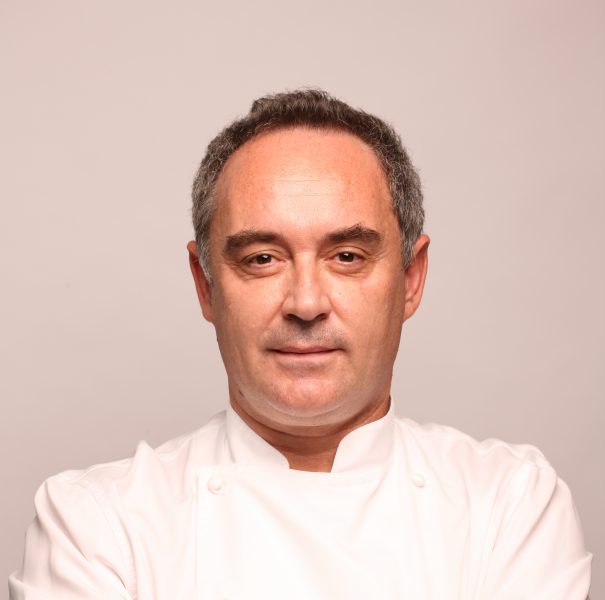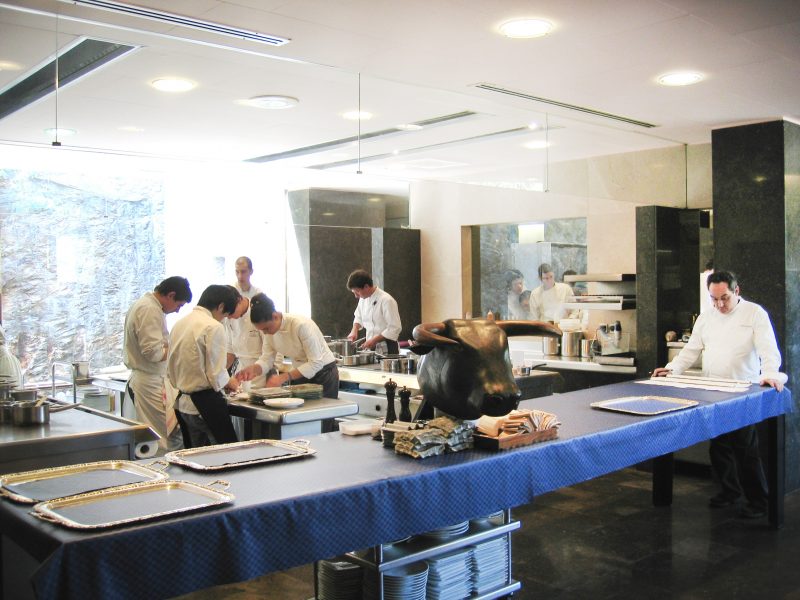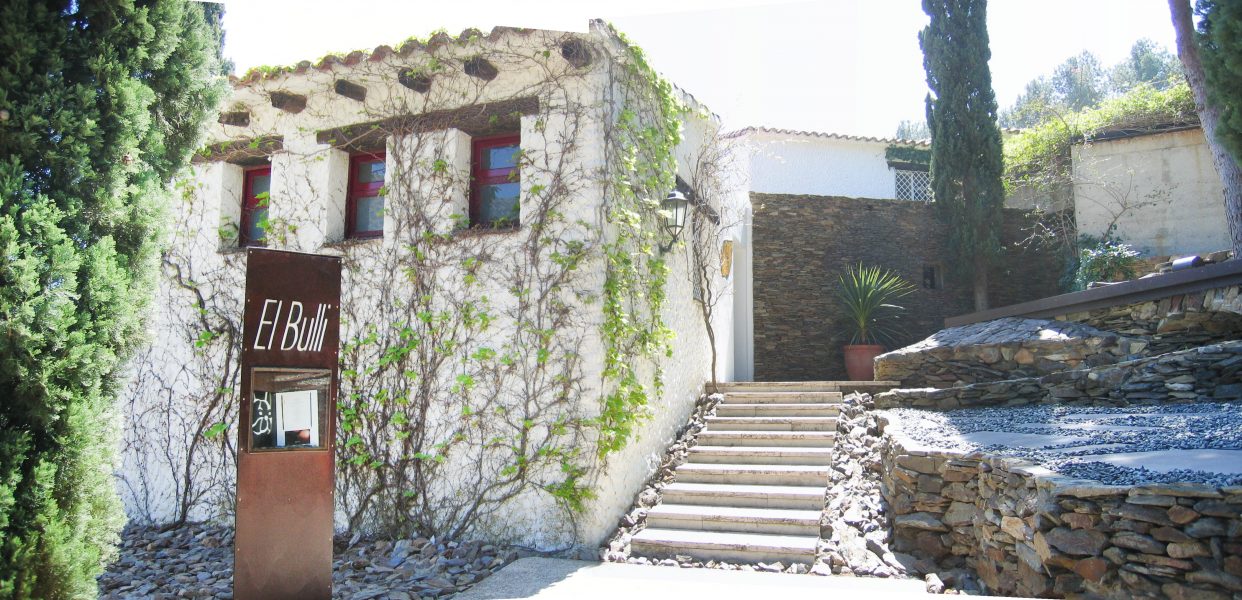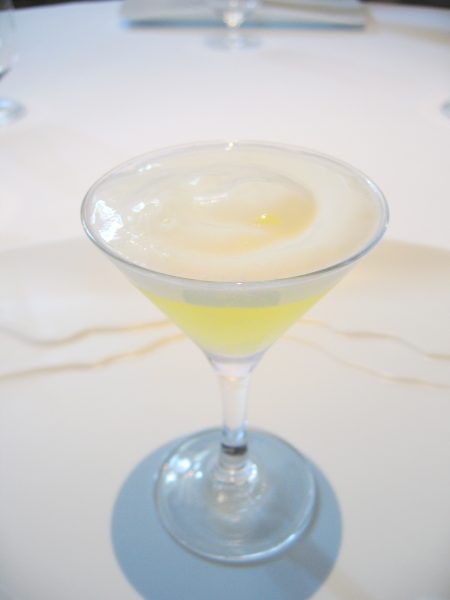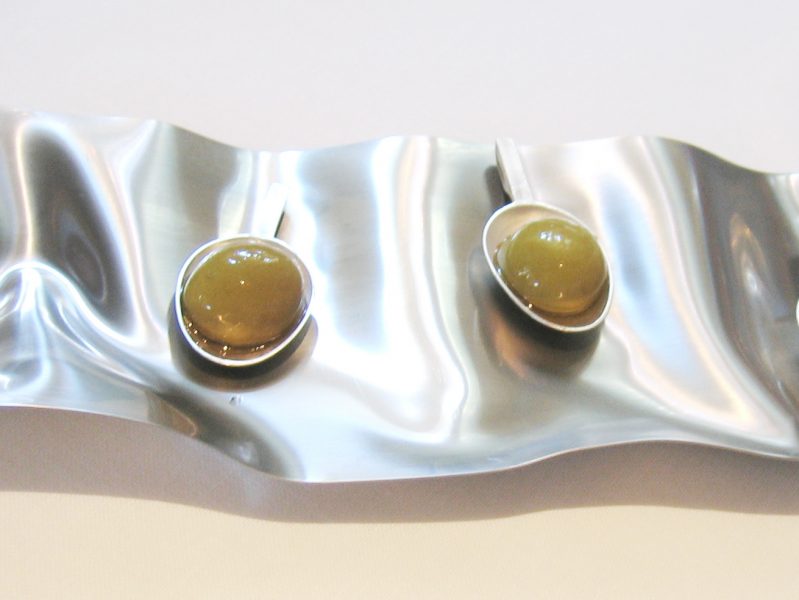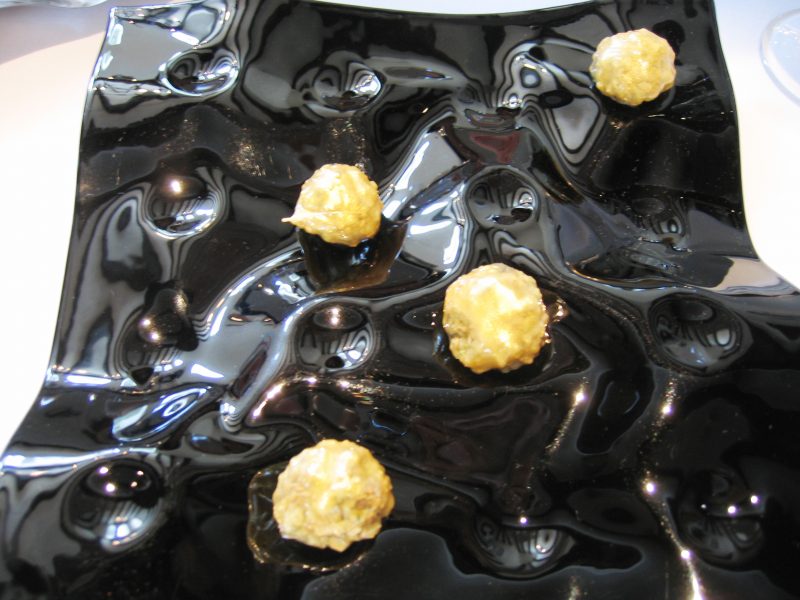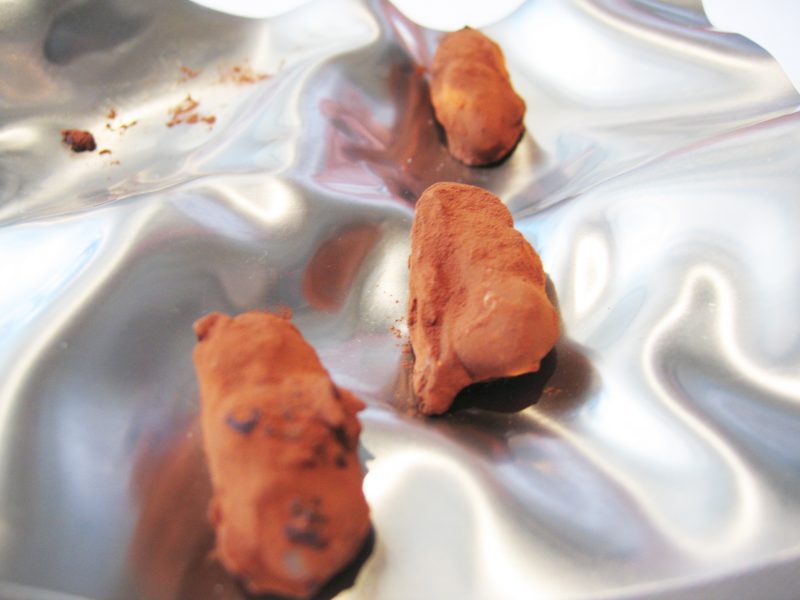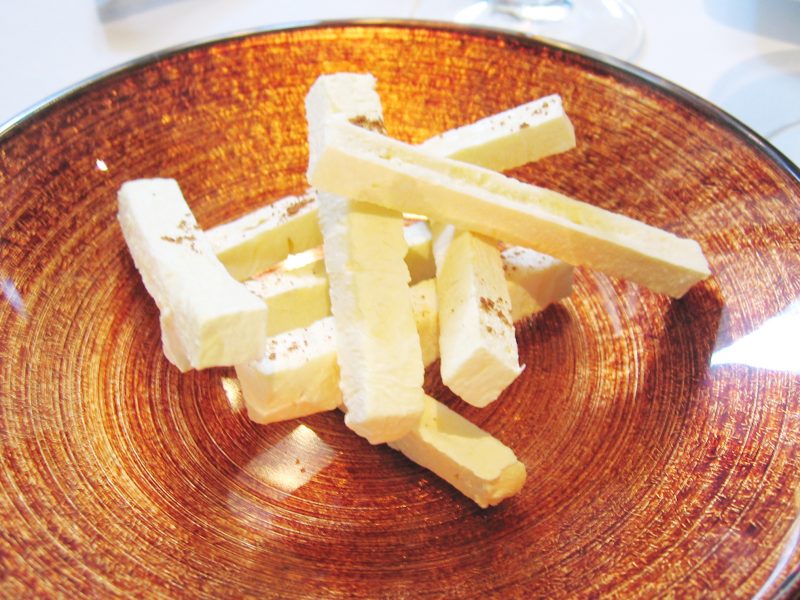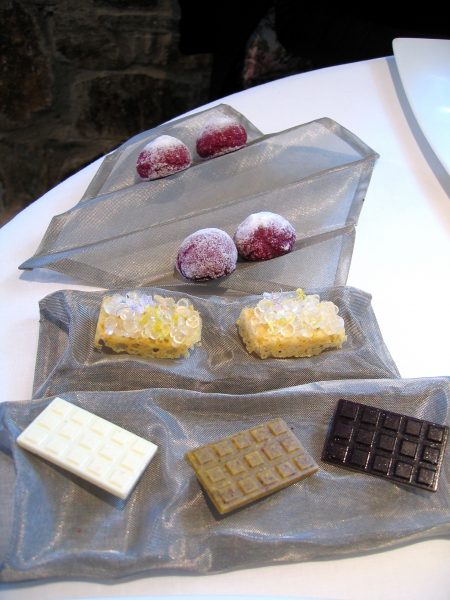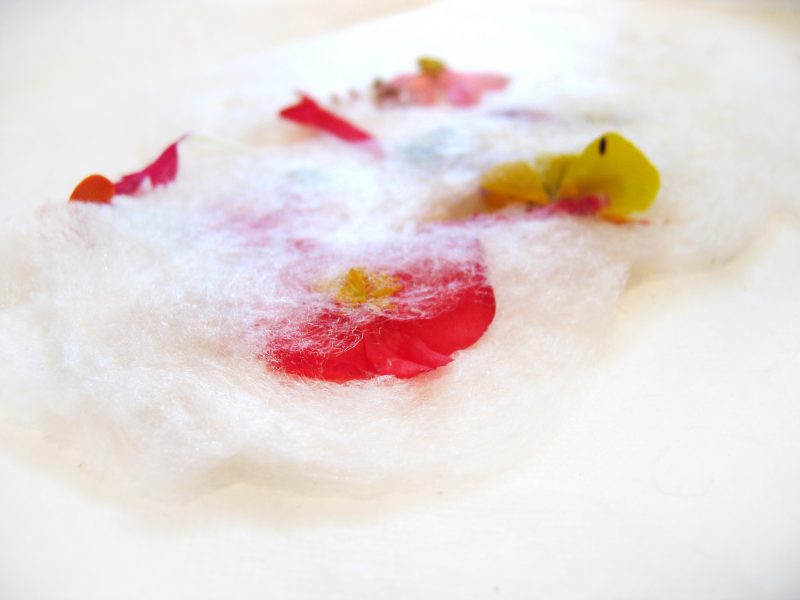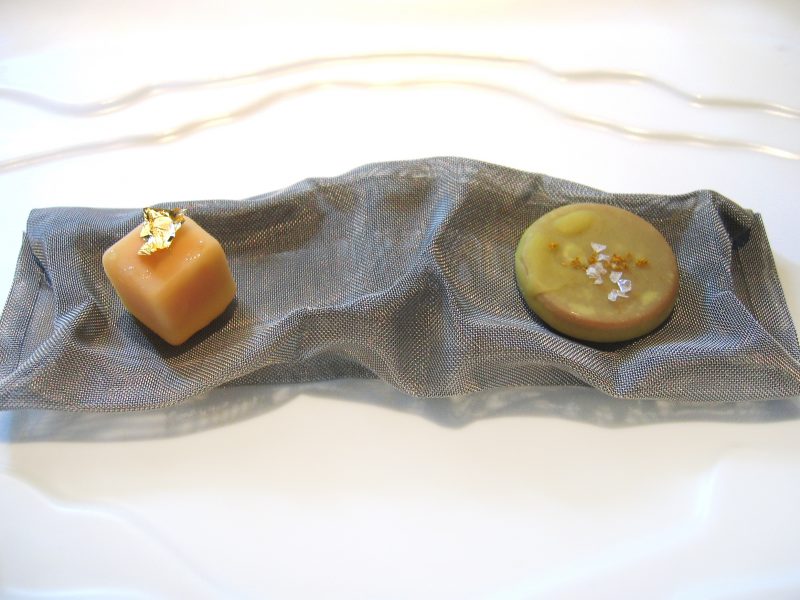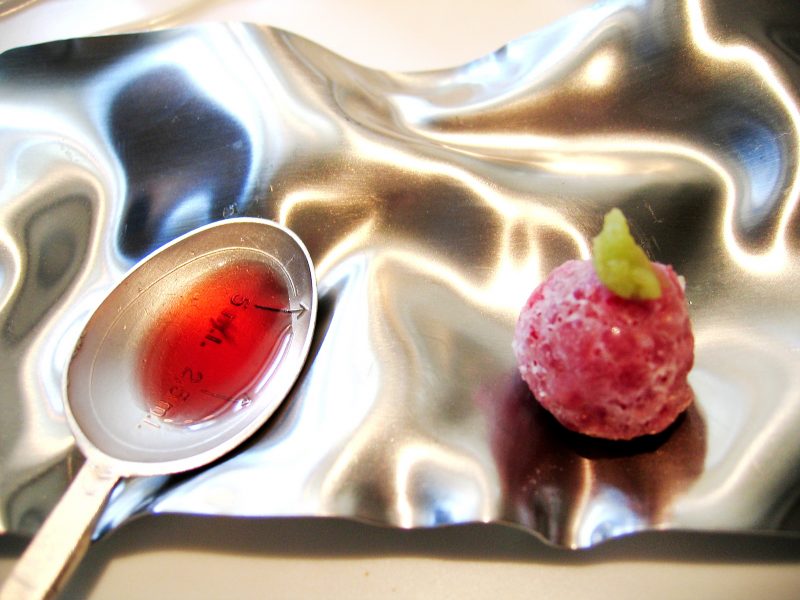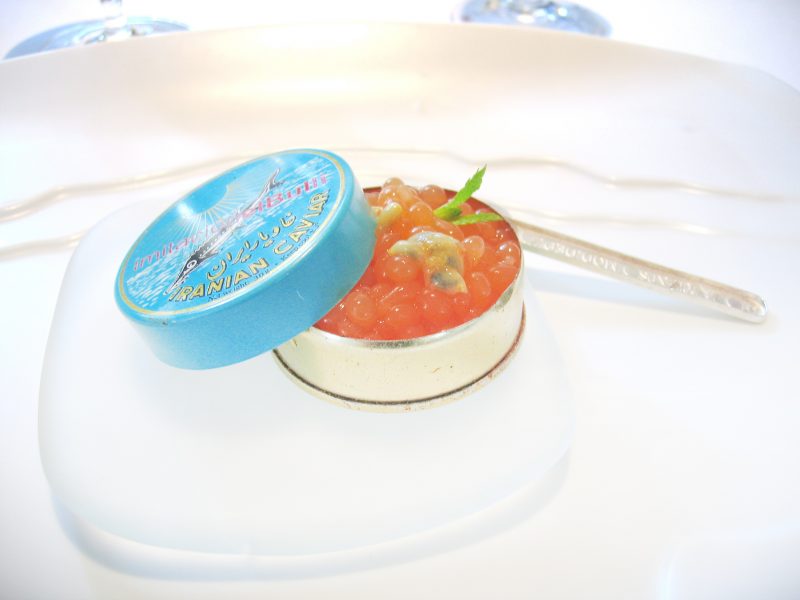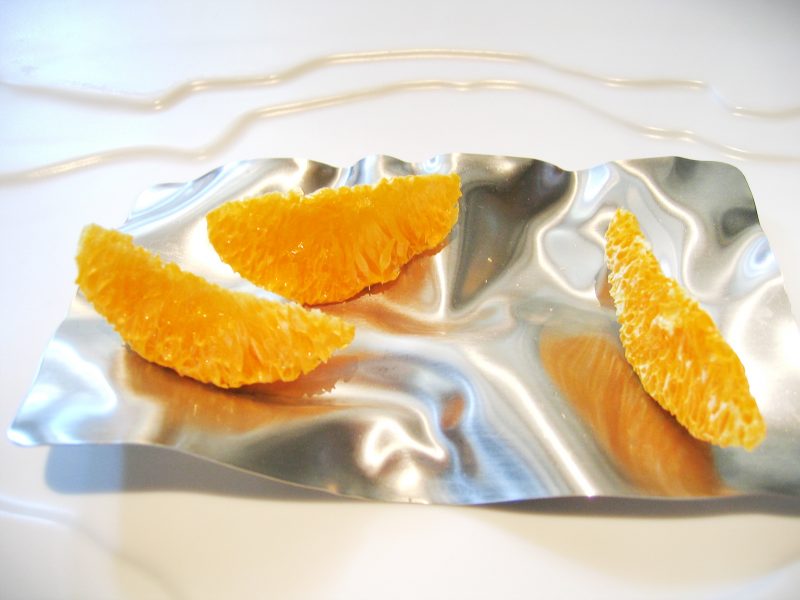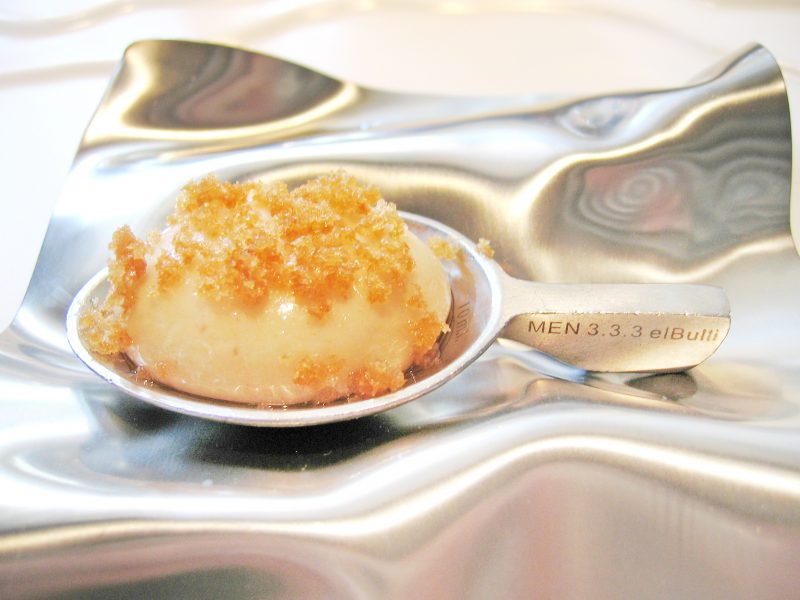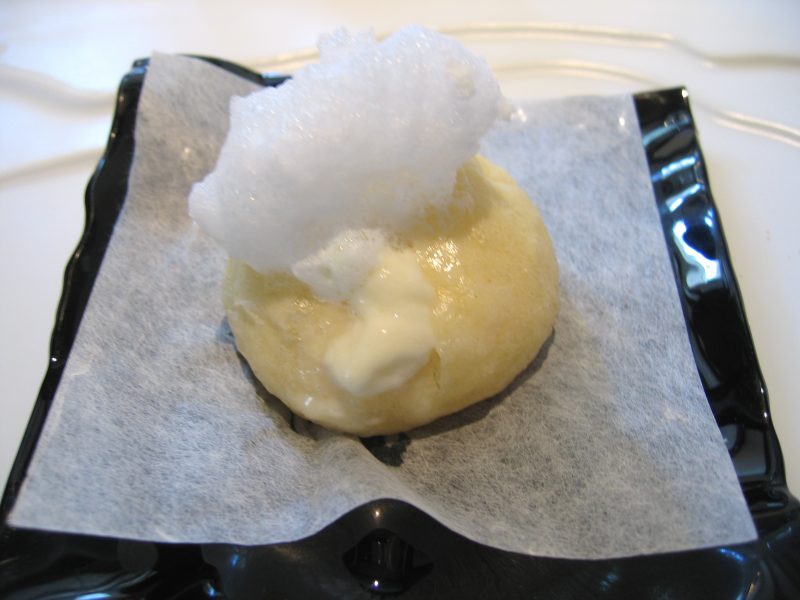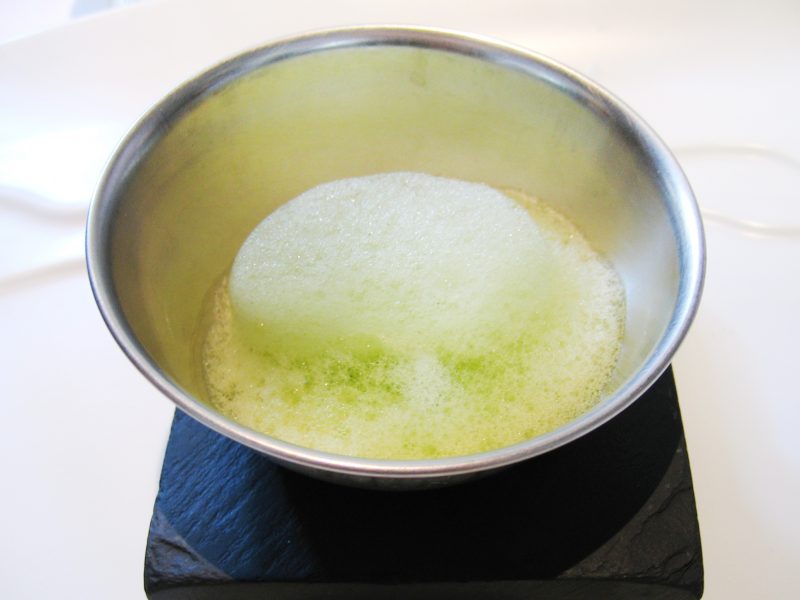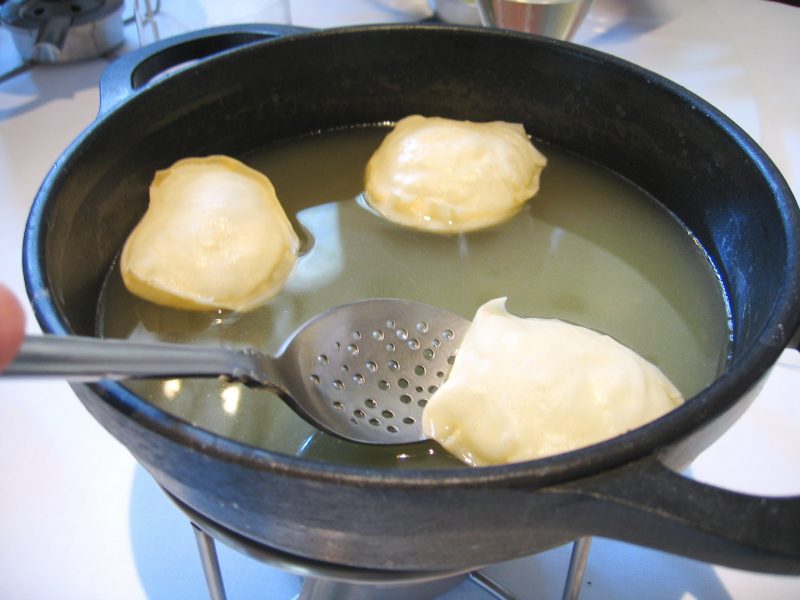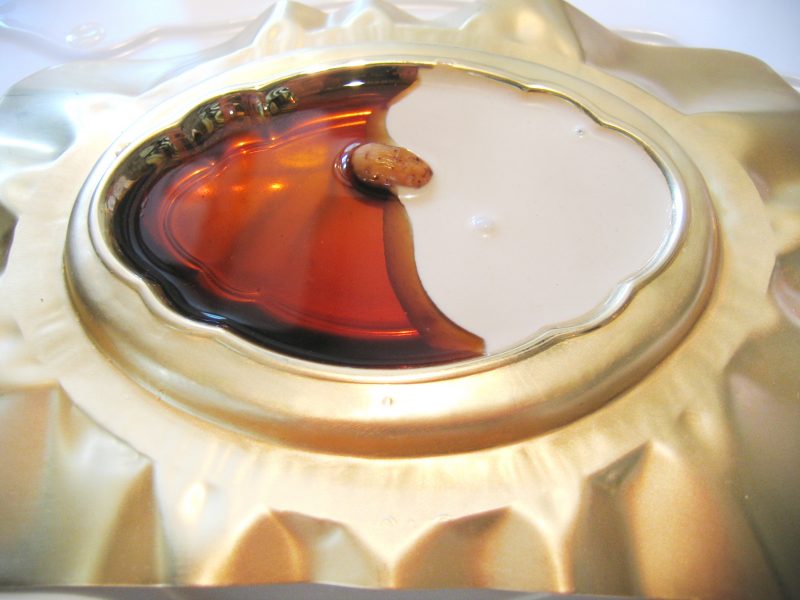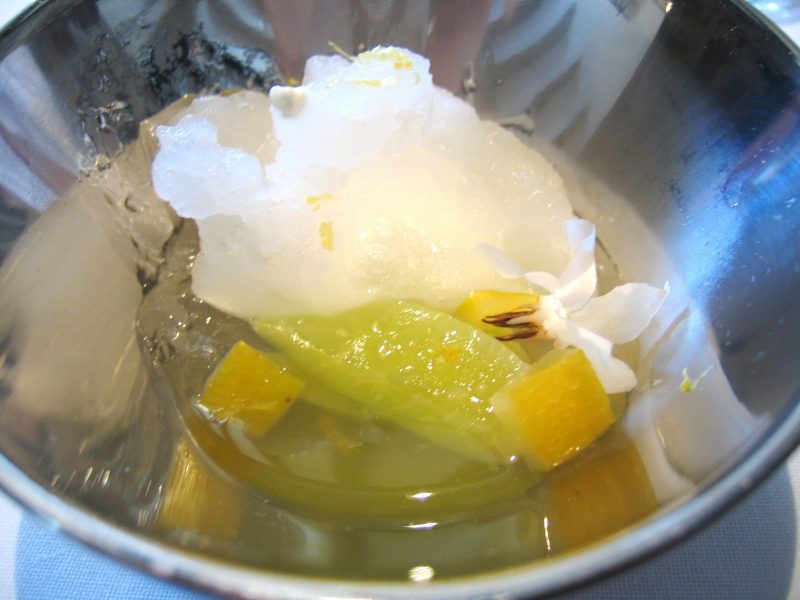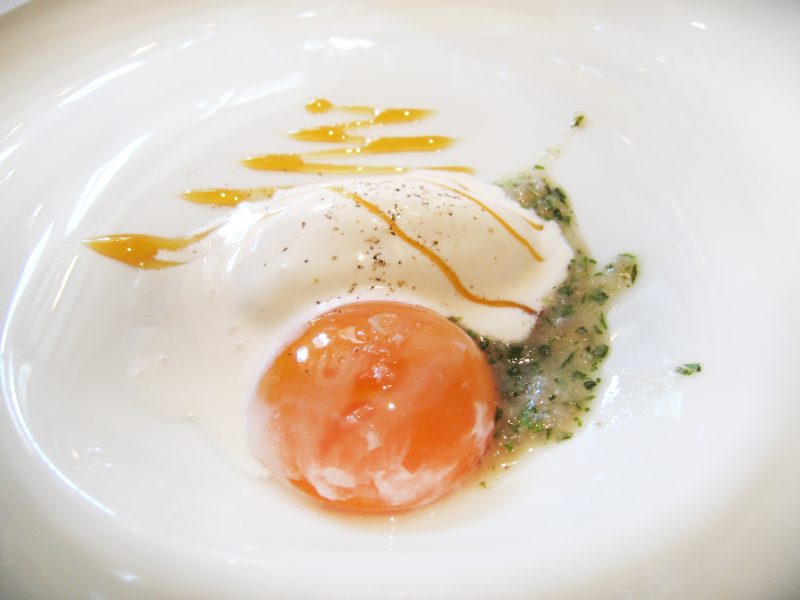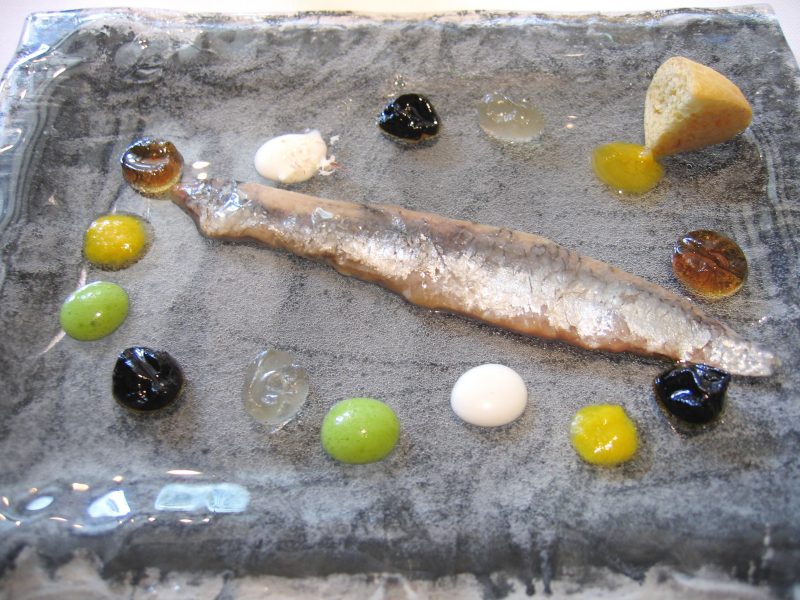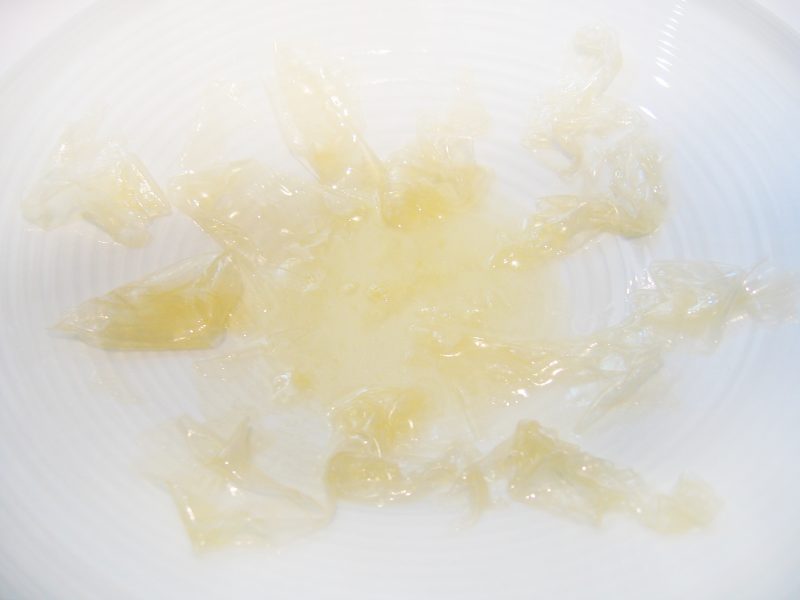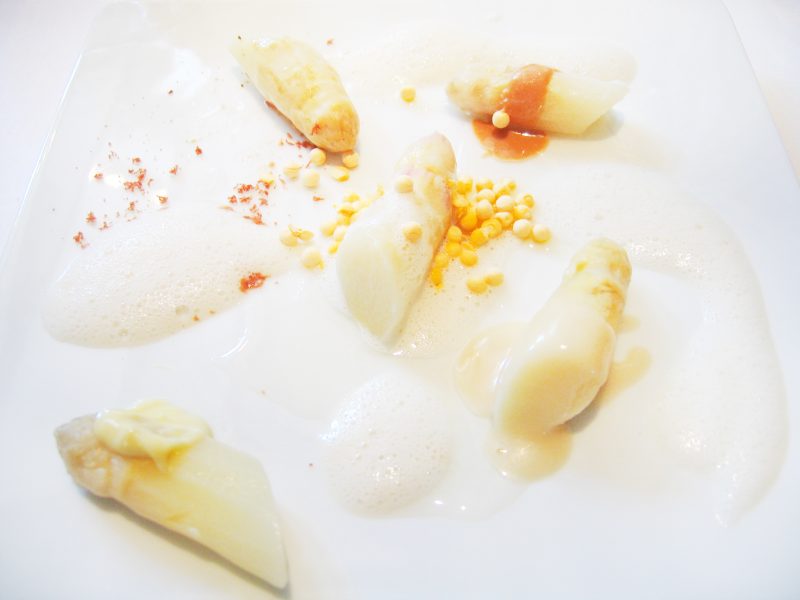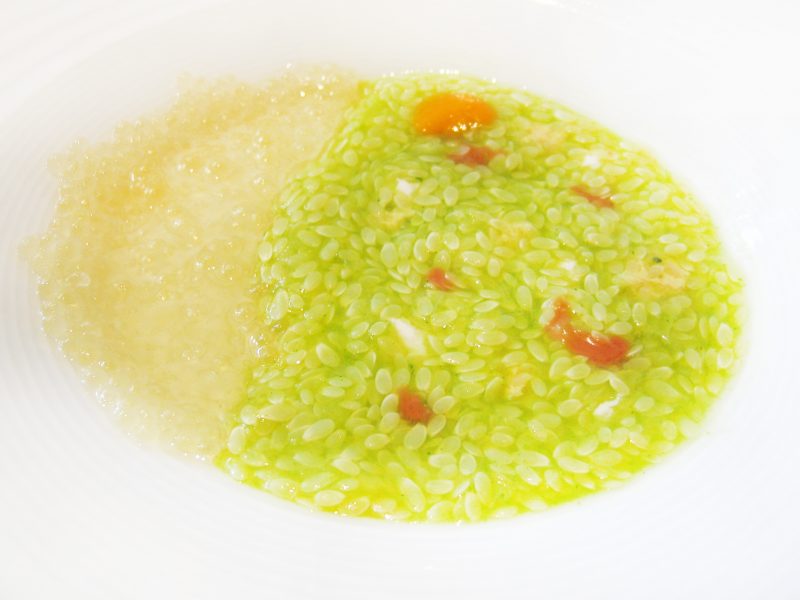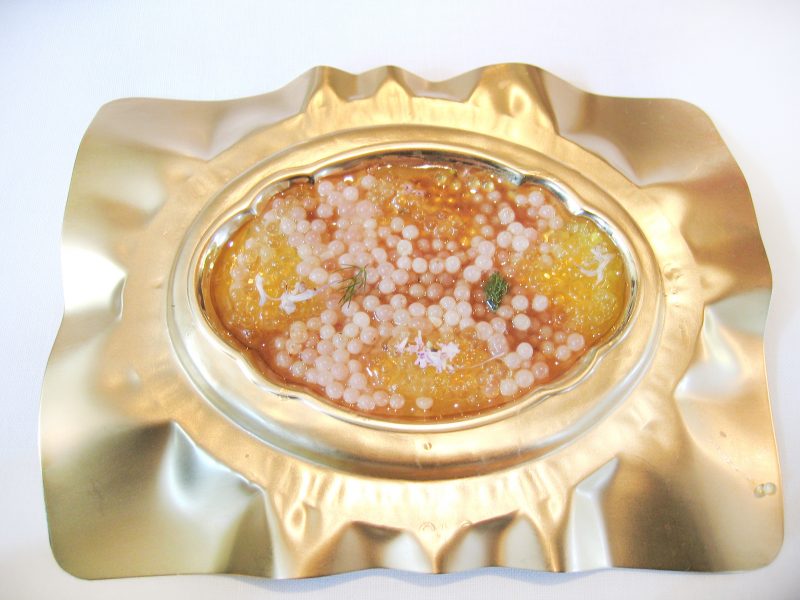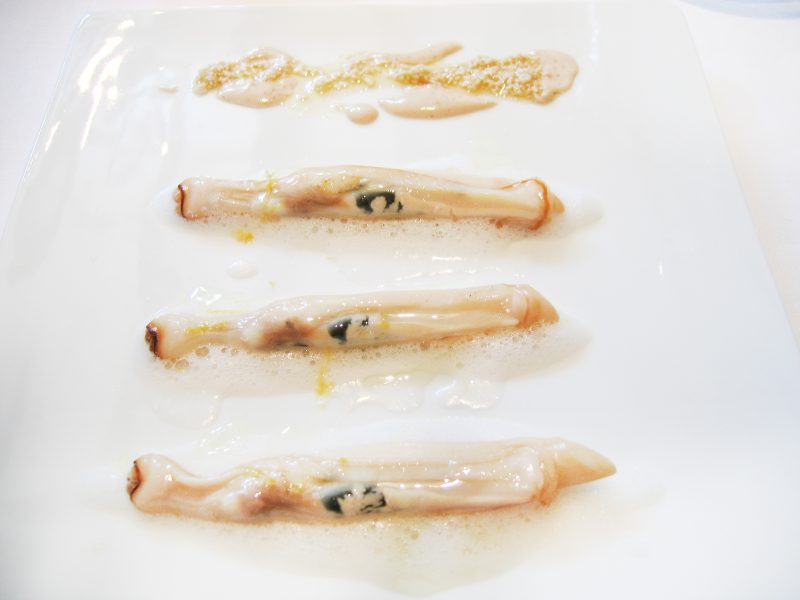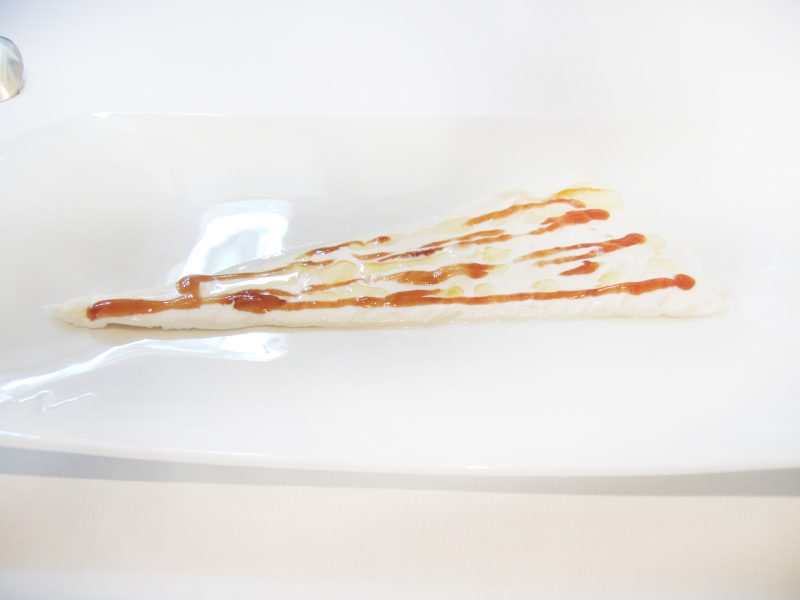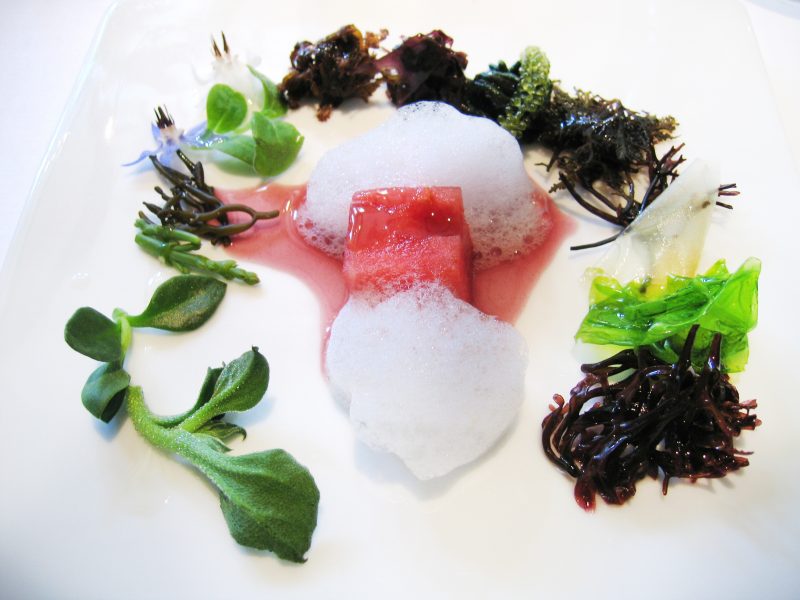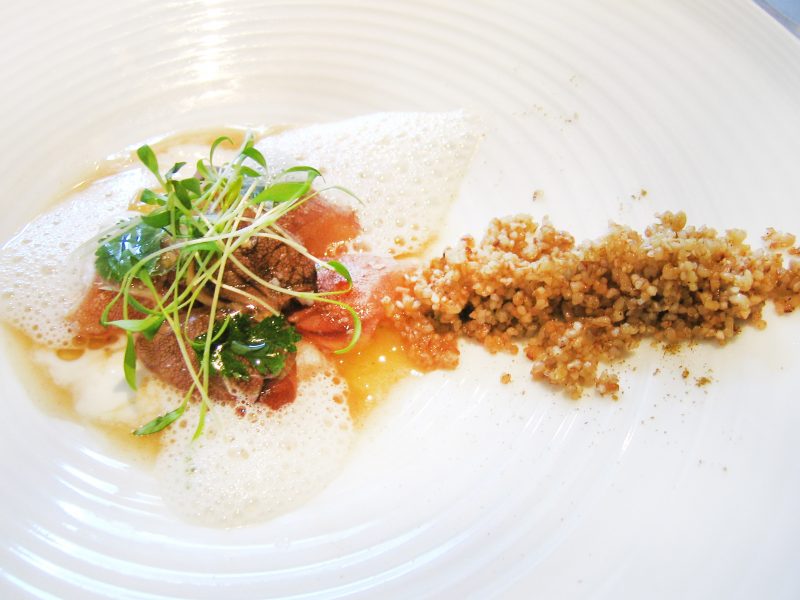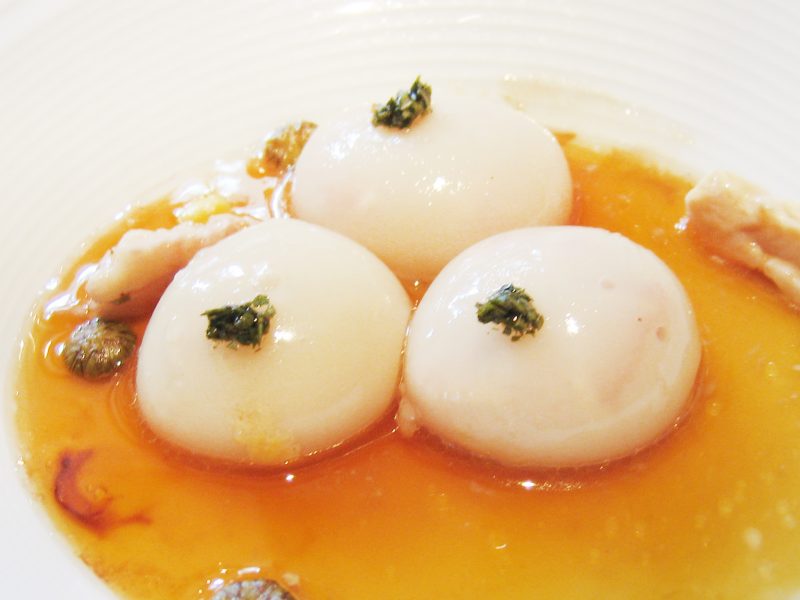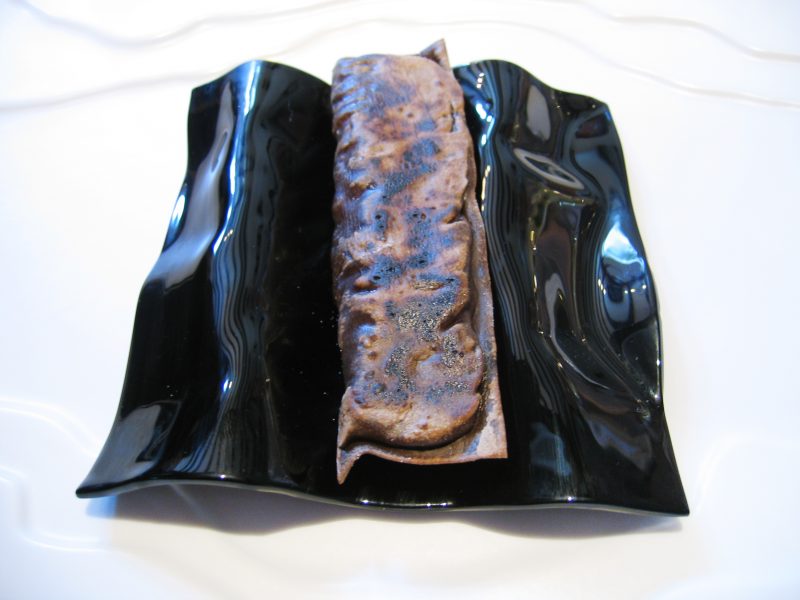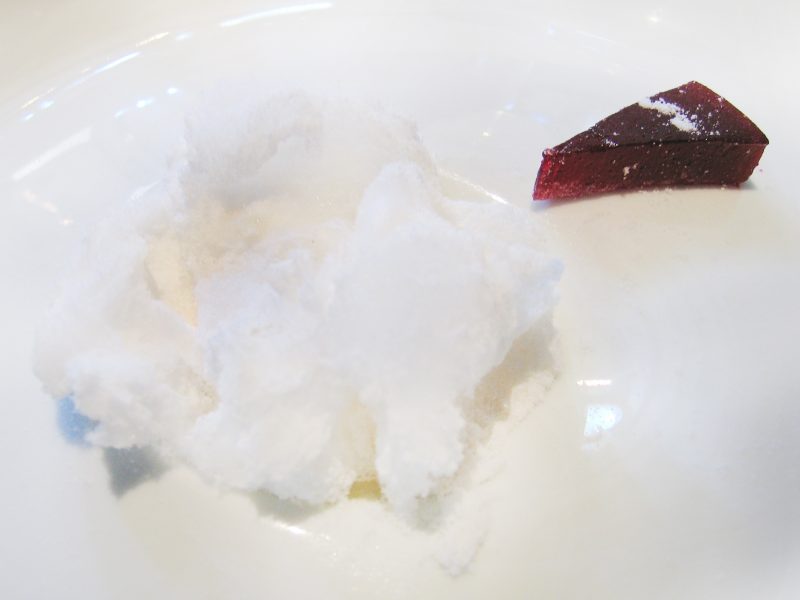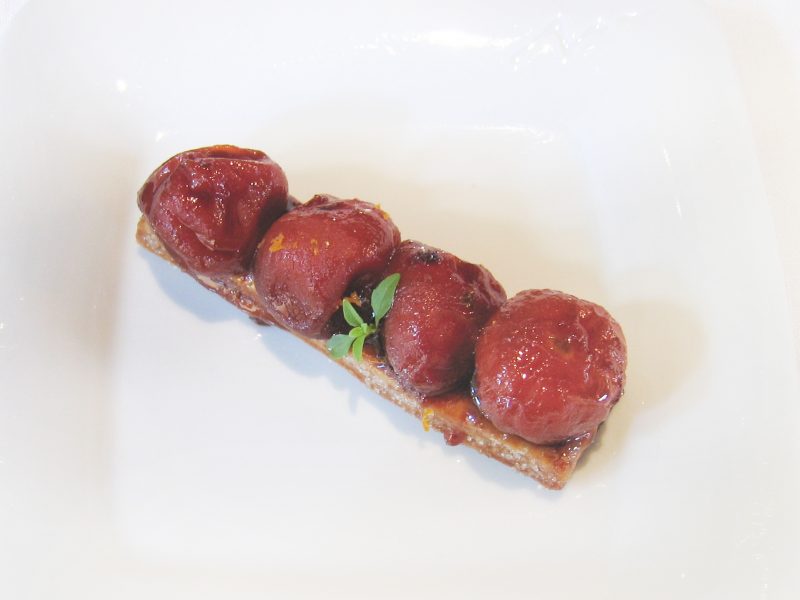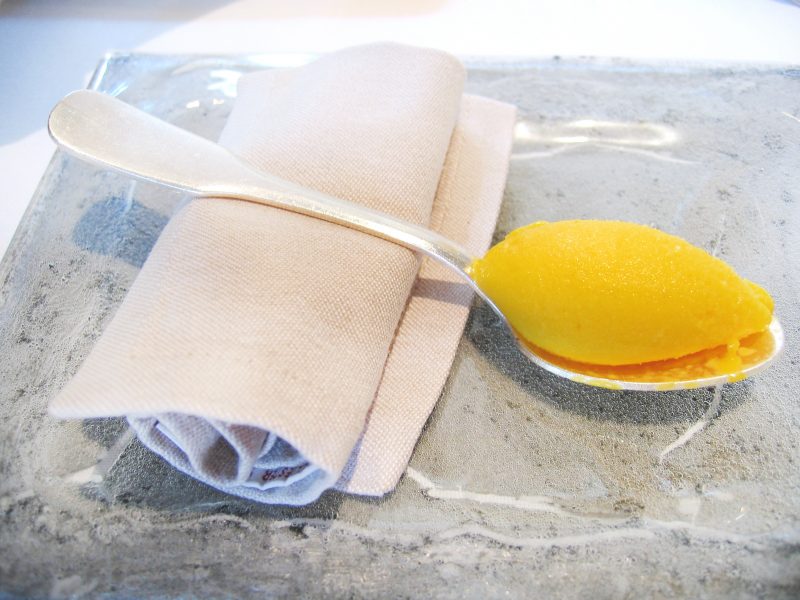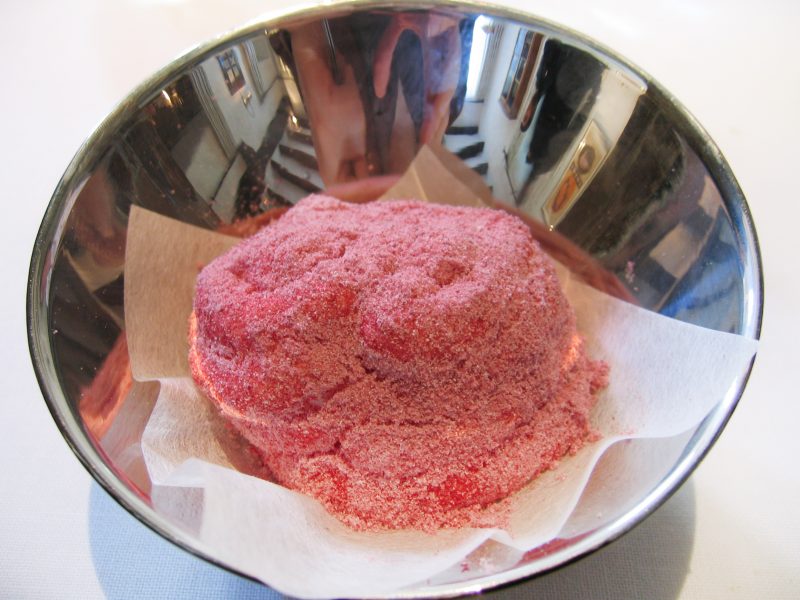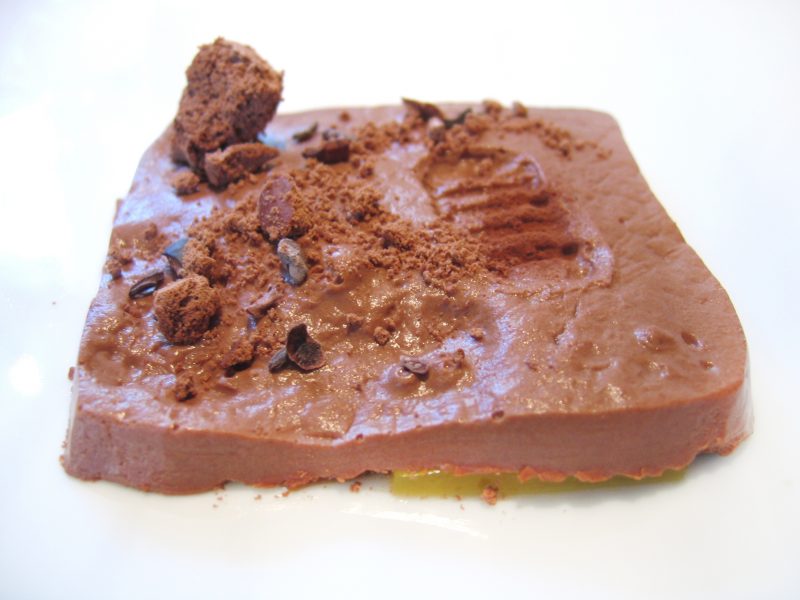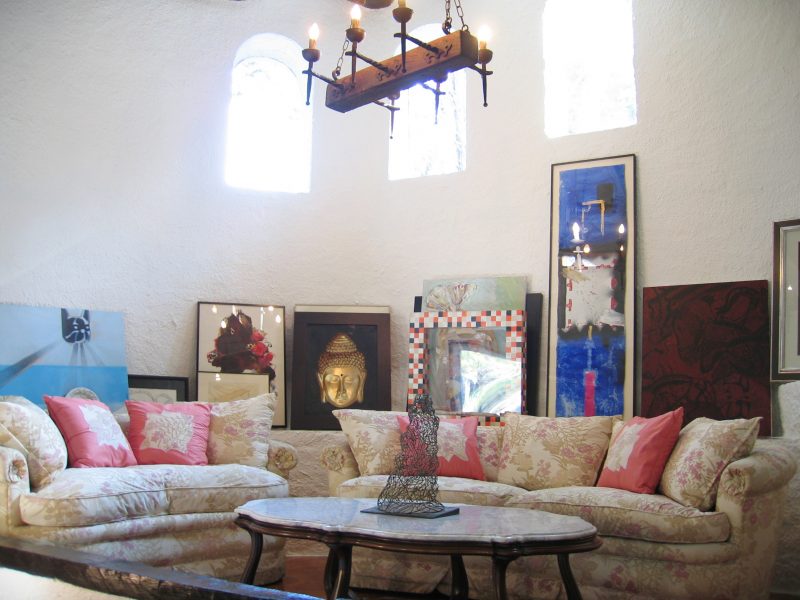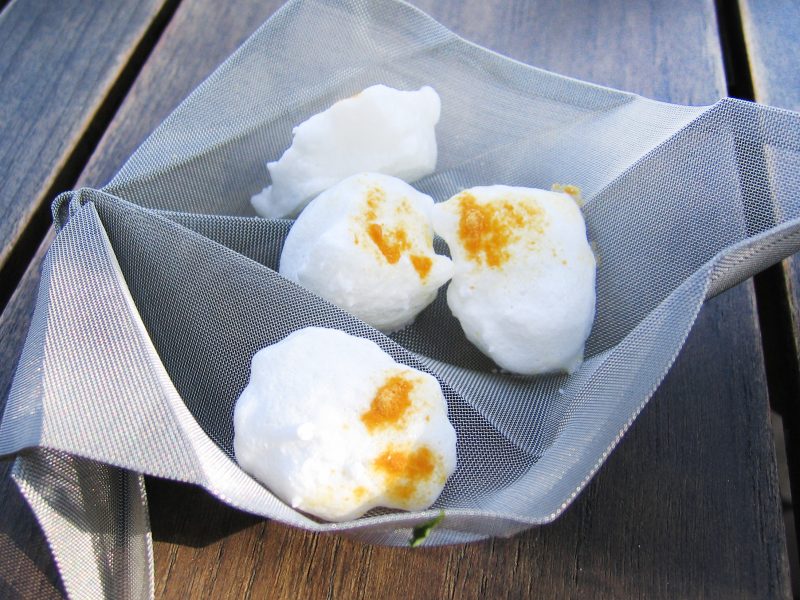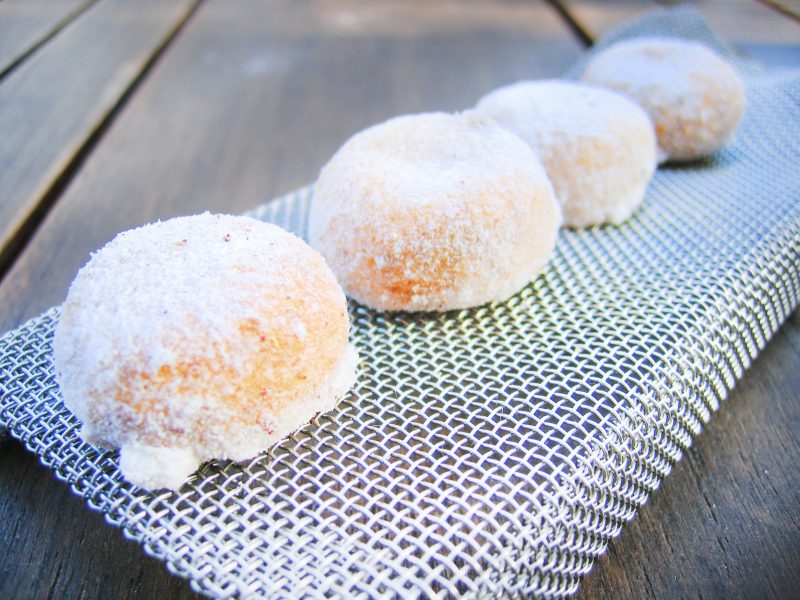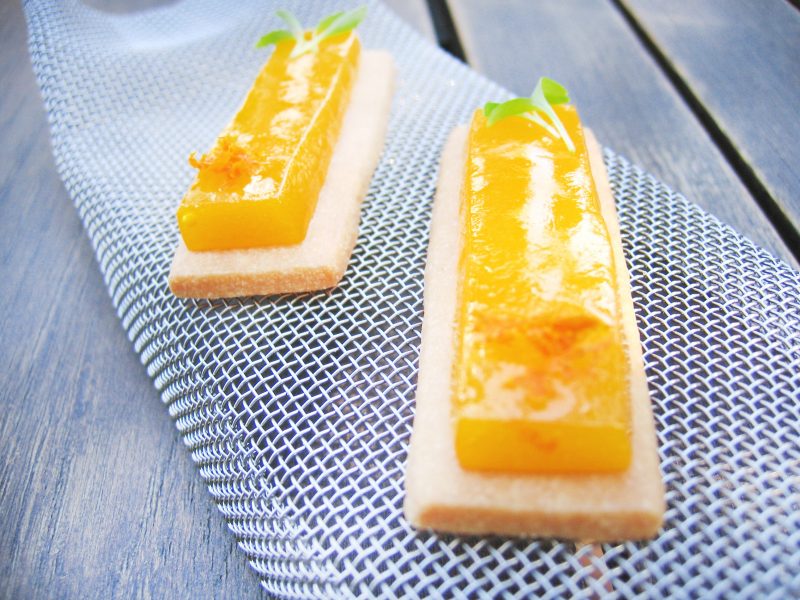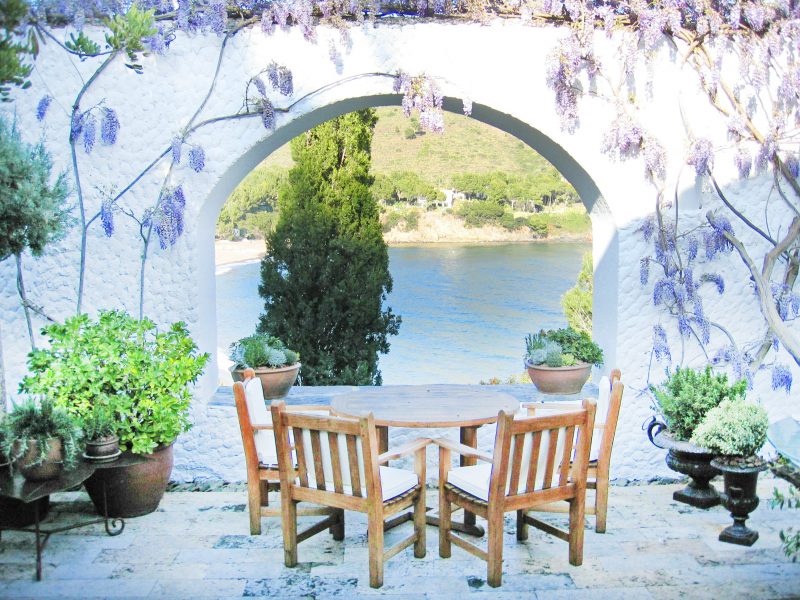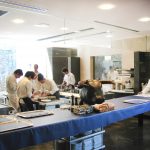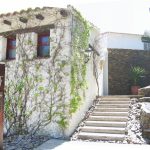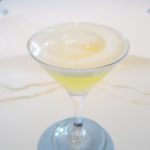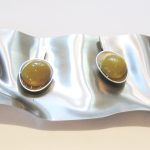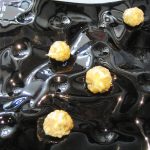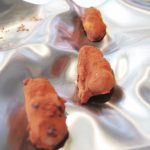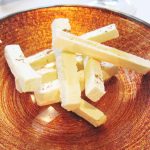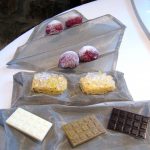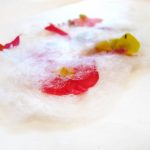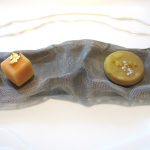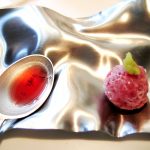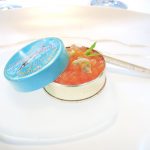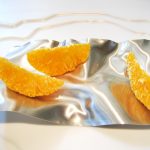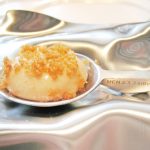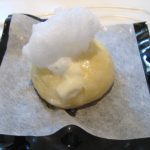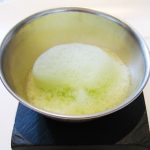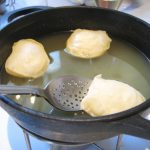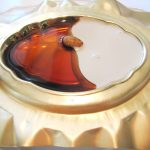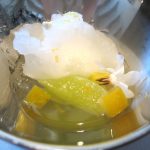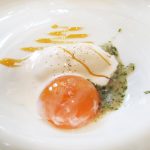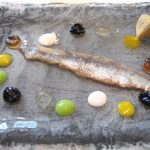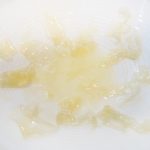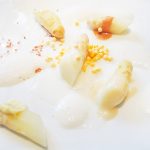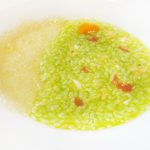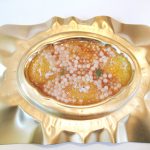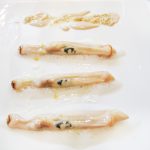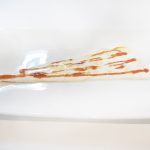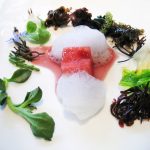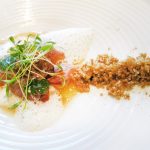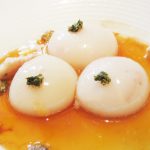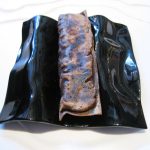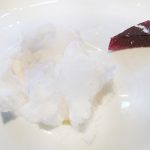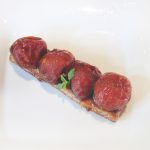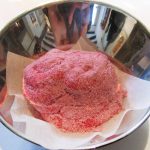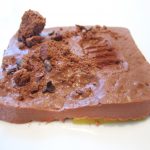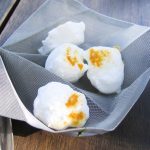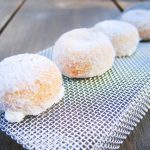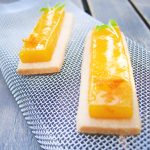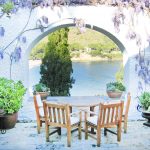How could our culinary exploration be complete without taking it to the extreme – to visit the hottest culinary spot on the planet and to experience the most eccentric meal by the most influential chef of our period! Open only 6 months each year with a seating capacity of 8,000 per season, El Bulli receives over a million reservation requests every season, getting a reservation is just like winning a lottery.
About the Chef
Described as a legendary gastronomic genius, Ferran Adrià, started his first job in El Bulli as a dishwasher for just one month on leave from his military service in 1983. He was invited to return the following season as chef de partie. In 1987, Adrià was inspired by the phrase “Creativity means not copying” in a demonstration by Jacques Maximin in Cannes. He then closed down the restaurant for 5 months for the first time and started to change his conception of cooking – a modernisation of the tradition. This led to a new cuisine where techniques and concepts are the driving force for creativity, resulting in an innovative menu with his unique personal styles and characteristics.
Being considered as one of the molecular gastronomy leaders, Adrià opened elBullitaller in Barcelona in 1997, a laboratory where he famously spends half his year, to cultivate new ideas, concepts, techniques, recipes, everything to do with creativity. His cutting edge creations from the kitchen can be summarised into two categories: “the familiar presented in an unfamiliar way, and the unfamiliar presented to look like something familiar”. In each case, Adrià constantly plays with the “three T’s”: Temperature, Texture and Taste, resulting in extremely unusual and stimulating combinations. You may find some combinations exquisite; yet some unacceptable but at least interesting.
About the Restaurant
Reachable by driving up a winding cliff road, El Bulli is a gourmet’s dream destination, with a terrace overlooking the bay and a spacious dining room.
The restaurant opens in January, with the menu concluding the previous season. Every day one old dish is removed and one new dish is added to the 30-dish menu. The menu continues to evolve until the restaurant closes for the year. The restaurant opens for 160 days a year, so 160 recipes are created each year. Each dish is conceived with talent and creativity; virtually no conventional dish can be found. El Bulli publishes catalogues which documents every dish coming out from its kitchen.
Diners are first invited to visit the kitchen before walking pass shelves of El Bulli’s kitchen products and into their dining room. The patio overlooking the beach is an ideal place for diners to take a break during the 30-course marathon.
About Our Meal
What could be better than starting our journey with a nice cava? Our amuse-bouche was accompanied by a bottle of Huguet Cava Brut 2003 – nice concentrated aromas of fresh apple and lemon.
Our 30+ course meal began with gin fizz, a martini glass containing chilled lime cocktail, blanketed with warm yogurt foam created by one of those El Bulli foam machine. The combination of warm creamy foam followed by cold citrus flavour was enough to awake all our senses. This fresh palate cleanser, with a twist of temperature contrast, was a brilliant start of our gourmand experience.
Next came the famous spherical olives floating in a jar of olive oil where the server scooped them one by one onto our plates. Instead of regular olive, they encased the essence of marinated olive in a thin gelatinous skin. It burst inside our mouth when biting into it, resulting in a wonderful little explosion of flavour. What a magical sensation!
The servers continued to fill up our table with various surprises. The golden nuggets had a “rice crispy” texture, very light in taste, contrasting with the long lasting oily taste of the previous course. The pineapple frits, dehydrated pineapple dusted with anise, could be a perfect mid-day snack. It is actually similar to astronaut food which you can buy in many science museums.
The beetroot and yogurt meringue looked like raspberry dusted with sugar. The rice and parmesan cookie was plain, but the lemon bits on top brought a burst of sunshine to the wafers. The tile was actually curing cheese presented in the form of three tiles of different flavours — yogurt, pistachio and black currant.
Our eighth dish, salty “Catanias”, was walnut completely covered in cocoa. A bitter taste to end our amuse-bouche courses, but a magnificent start of a wild gastronomic marathon!
So far, all courses were served on uniquely designed ultra-modern plates, but still not as unique as the next course which was served just on a piece of drawing paper! It was a beautiful contemporary art called flowers cotton. Different varieties of flowers were adhered to a sheet of paper with the aid of cotton candy. So colourful and elegantly decorated! One of the flowers unexpectedly made our tongue trembling until the next course, very unusual sensation.
Our tenth course was an icy tangerine cube and a cookie. The peanut and curry cookie had a strong taste; luckily the tangerine juice inside the icy cube was very fruity, diluting away the after taste of the cookie.
In El Bulli, it is difficult to pair wine with this kind of adventurous meal. In any case, our meal was accompanied by a bottle of white from Rioja in southern Spain, Remelluri 2004 – appealing floral aroma with flavour of pear across the palate.
Going on to the eleventh course, it was raspberry vinegar served in a medicine spoon and a sugar coated raspberry with a touch of fresh wasabi. It was warm and sweet, almost like a very light dessert, very tasty and refreshing.
Our next course was from our special e-mail request. This famous dish is probably the most photographed El Bulli dish and is the front cover of the El Bulli catalogue 2004. This dish came with a caviar spoon and was presented in an El Bulli tin which mimics an Iranian caviar blue tin. It was filled with melon balls, looking just like caviar. Biting into those melon balls was just like biting into caviar, only to have melon juice burst into your mouth. It was garnished with passion fruit seeds, bringing a hint of acidity to the sweet melon. This was definitely one of the chef’s masterpieces, perfect in every possible way!
Nothing is usual in this place. Instead of standard breaded meat croquette, they served a croquette but in liquid form – ham consommé trapped inside a thin fragile skin – long and difficult to prepare but quick and easy to eat. Unfortunately, it was just too greasy, like swallowing a mouthful of pork fat! The vegetarian alternative, few wedges of dehydrated and fried orange, employed similar technique as the previous pineapple dish.
Our fourteenth course was steamed brioche with mozzarella and roses perfume. The brioche was very much like a Chinese bun, but more buttery. It was topped with a fresh mozzarella, creamy and melting as a result of steaming. The dish was finished by foam with an intense fragrance of roses.
Our next course was called wonton, of course, nothing like wontons served in Chinese restaurants. It was served in fondue style where huge parmesan wontons floating in a large bowl of chicken broth. The server scooped the fragile wontons out with a perforated spoon and gently dipped into small bowls of chilled basil foam. We were instructed to eat the wonton in one bite. It was very challenging to put the whole wonton into our mouth. The wonton exploded upon contact with the tongue and we realised that it was rather hollow inside. The wonton itself was delicious, but it did not go well with the chicken broth. The basil foam did not offer much to this dish either. The vegetarian option was probably better since it was in cheese broth instead.
The horchata and truffle was a dish divided into two parts. Truffle juice was on the left-hand side; horchata was on the right-hand side; a tigernut was in the centre. Horchata is a Mexican drink made with almonds, rice and tigernuts. We were instructed not to mix the two sides but to have them alternately. After tasting both sides, we immediately understood the reason behind the instruction – savoury truffle juice with sweet horchata, a clear contrast in flavour. In addition, the seed in the centre offered a dry fabric texture.
Our seventeenth course was chef Ferran’s interpretation of gin-tonic.A small piece of cucumber was soaked with gin-tonic, garnished with few diced lemon peel and finished off with a rose slush. It was refreshing with a sharp note as the bitterness of the peel submerged with the bitterness of tonic. Next, “Que bearn” egg, composed of egg yolk, frozen cream and shallot, was the worst dish so far. It was dominated by a strong vinegar flavour, quite disgusting! From the name of this course, many people suspect that this dish represents a “deconstructed Béarnaise sauce”, a French sauce composed of butter, egg, shallot, and vinegar. This dish illustrated that combining those ingredients would resulted in a superb sauce but unpleasant if each ingredient is consumed separately.
The raisins of PX with anchovy and cardamom brioche was the first dish containing some real food – a big piece of anchovy in the middle of the plate, with delicate arrangement of bubbles around, such as basil bubble, coconut bubble, raisin bubble, sweet wine bubble… The sweet wine is made from Spanish grape Pedro Ximénez, also known as raisins of PX. An interesting dish, but unfortunately anchovy is not my type of fish. The vegetarian alternative of this course replaced anchovy with shaved cheese.
Our twentieth course was tomato soup with virtual Iberian ham. The ham, although very thin, still retained its strong meat taste. The soup was fascinating – strong tomato taste but it is not red! This is an illustration that tomato juice is actually an emulsion so the red colour can be eliminated by filtration. The dish was a bit too greasy and the presentation was terrible because it resembled “used condoms” as pointed out by our dining companion!
The vegetarian option was a closed coffin filled with parmesan air, submerged in liquid nitrogen and setting as solid. A small plastic zip-lock bag, labelled “elBullisnack”, contained dried walnuts, raspberries and almonds. We were instructed to sprinkle the muesli slowly on top of the parmesan air. When digging through the parmesan air, the textural differences of the muesli were very intriguing.
Next course contained five white asparagus in different cooking time, paired with five different sauces. The pairing was very successful — lightly cooked paired with light sauces; more cooked paired with strong sauces. It was fascinating to discover how the cooking time and sauce combination could lead to very distinct texture and taste.
Continuing the meal, a dish made of snail eggs, was the most disgusting dish of the night. It was too salty and too greasy. The snail eggs also had a very unpleasant taste and felt like biting into lots of mini oily tablets. The vegetarian alternative would probably be a better choice — zucchini risotto. The risotto was not made with rice but with zucchini seeds, and mixed with dried peas. The texture was amazing! A million times better than the snail eggs!
To compensate the previous failure, the chef presented the best dish of the night – razor clams in vinegar sauce. The razor clams were extremely fresh; the cooking time was absolutely right on, resulting in a perfect texture; the vinegar sauce gave an extra boost to the flavour and the rich nutty sesame oil was paired with brilliance. Completely speechless! This was our twenty-third dish, almost near the end of our 30-course marathon. However, this was just the second dish with some real food! The vegetarian option was milk with black truffle, incomparable to the razor clams for sure.
The next course, the sea, was very interesting. This was a seaweed salad consisting of more than 10 different kinds of seaweeds. The seaweeds circled around a watermelon cube with sea water foam. We were instructed to start from bottom right then counter-clockwise to get a full experience from the seaweeds. It was amazing to discover so many different types of seaweeds as they all had unique flavour and texture: sweet, salty, soft, rough, rubbery, chewy, crispy… Unfortunately, most of them are not pleasant to eat. After finishing all the seaweeds, the sweet watermelon in the middle became heavenly!
Our twenty-fifth course was Marrakech crab with couscous. The crab was absolutely stunning — so soft and fresh, paired amazingly with the herbs on top and citron gelatine at the bottom. However, I didn’t comprehend the use of couscous in this course. The couscous was spicy and toasted after cooking so it was very dry and hard; very oddly matched with the crab. The vegetarian alternative was tomatoes with almond powder and elderberry foam. The almond powder was too intense, smothering the other flavours.
Did we say that the snail egg was the worst dish? Well, please add this one into the worst list as well – lamb brains with their own juice. These glossy balls containing gluey liquid exploded inside your mouth. So disgusting! The vegetarian alternative was the national fruit of Jamaica, Akees. It did not have a strong flavour but its texture was strange, somewhere between raw and cooked chestnuts. There were also some melon slices and a milk cream floating in a broth.
Our twenty-seventh course was a fatty one, Iberian ham fat and veal bone marrow wrapped by an over toasted pita bread accompanied by berry glacée. The burned pita became too hard and bitter. The ham fat and bone marrow were greasy and salty. Fortunately, the berry ice was intense and refreshing which rescued us from that overwhelming after taste.
The pre-dessert course was called sheep. A warm and runny sheep cheese, covered by the “wool of the sheep” made from the same cheese. There was also a raspberry jelly on the side. And moving on to the dessert, the first one was spicy tomato cake. The tomato was very salty but the tart was very sweet. It was a strange combination.
Then there was a kumquat sorbet, which was too bitter. Kumquat was a fruit originally from China, alike but smaller than Clementine. The best dessert was raspberry meringue, with a layer of jelly and cream inside. It was so soft and puffy; so refreshing and lovely!
Our meal finished with the one last dessert, moon. What a fancy name for a chocolate mousse with a footprint, resembling human footprint when first landed on moon in 1969! The chocolate mousse was delicious, rich but not overwhelming, smooth and melting upon contact with the tongue.
Finally, we had our petits-fours and tea at the patio. It started off with some meringue dusted with some spice on top. Strange flavour… Then, some doughnuts-like dessert arrived, filled with chocolate ice cream inside. Very yummy! Finally, to end this meal, we were served with small rectangular blocks of tangerine gel resting on pieces of butter biscuits.
After our 30+ course “mind-blowing” journey, we were mentally exhausted, eating so many courses one after another for almost five hours. However, physically, we were not as full as we thought we would have been, probably because there were not that many dishes with real food in them!
Overall, El Bulli offered us a joyful, stimulating and interesting dining experience that no other restaurant in this world could provide. It was not our best meal, but definitely a true “tasting menu”!
The creativity we have seen from our meal was not as great as we expected. Though there are unique twists to usual dishes, but many techniques and ideas, such as freeze-drying, famous “culinary foam” and spherical presentation, were repeatedly used throughout our meal. Many courses were actually very similar to previous years, with just some slight changes in ingredients or presentation. As Adrià admits, each year the menu creation gets harder, because it is difficult to create new concepts and new techniques. Each year, there are only two or three new cooking techniques that emerge. Therefore, we probably should not blame the chef for lack of creativity. He already tried his best and we truly appreciate his effort!
It would be better if they cut down on the use of weird ingredients, such as snail eggs and lamb brain, but create more dishes with some real food, such as razor clams. With more than 30 dishes to offer, why not impress the diners with creativity in some of the dishes, and impress them with rigorous cooking in other dishes?
About the Service
The service was smooth, friendly and professional. Named as the best restaurant in the world, I was very surprised to find out that all the servers were so humble and attentive. At the start of our meal, they asked for our dietary restrictions and were happy to make as many substitutions as needed. Also, diners are welcome to take breaks throughout the long meal by informing their servers in order for the kitchen to time the next course appropriately. After our meal, a personalised menu was provided, accurately capturing all the substitutions each one of us had.
An interesting notice was that no knife was provided throughout the whole meal. Everything was eaten with fork and spoon, or with our hands.
The wine list was fabulous, containing Spain’s finest wine and a careful selection of international wines, all at a reasonable price.
Practical Information
El Bulli
Cala Montjoi – Ap.30 (17480)
Roses, Girona, Spain
Tel +34 972 150 457
www.elbulli.com
June to December: Check calendar on their website
30-Course Tasting Menu: €210
Useful Tips
The chances of securing a table in this 50-seat restaurant, opening only half of the year, is very slim. The reservation is taken in January, with no exact date announced. You can only reserve by e-mail, no phone call accepted. Within a few hours, all the reservations for the whole year were completely taken. However, it takes a few months for them to sort out all the reservation e-mails. Therefore, wait for their confirmation patiently and good luck!
After arriving in Roses, follow the main road (Avinguda de Rhode) until you see a roundabout with a marina (a dock with boats) on your right. Turn left at that roundabout, then drive straight ahead for 600 meters. You will then see a small road on your right going up to the mountain. Take that mountain road and keep driving for about 15 minutes until you reach the restaurant.
Do not expect that all of your 30 dishes would suit your palate. Think of this whole meal as a gastronomic experience. If some dishes do not work for you, at least appreciate their creative effort and courage.
